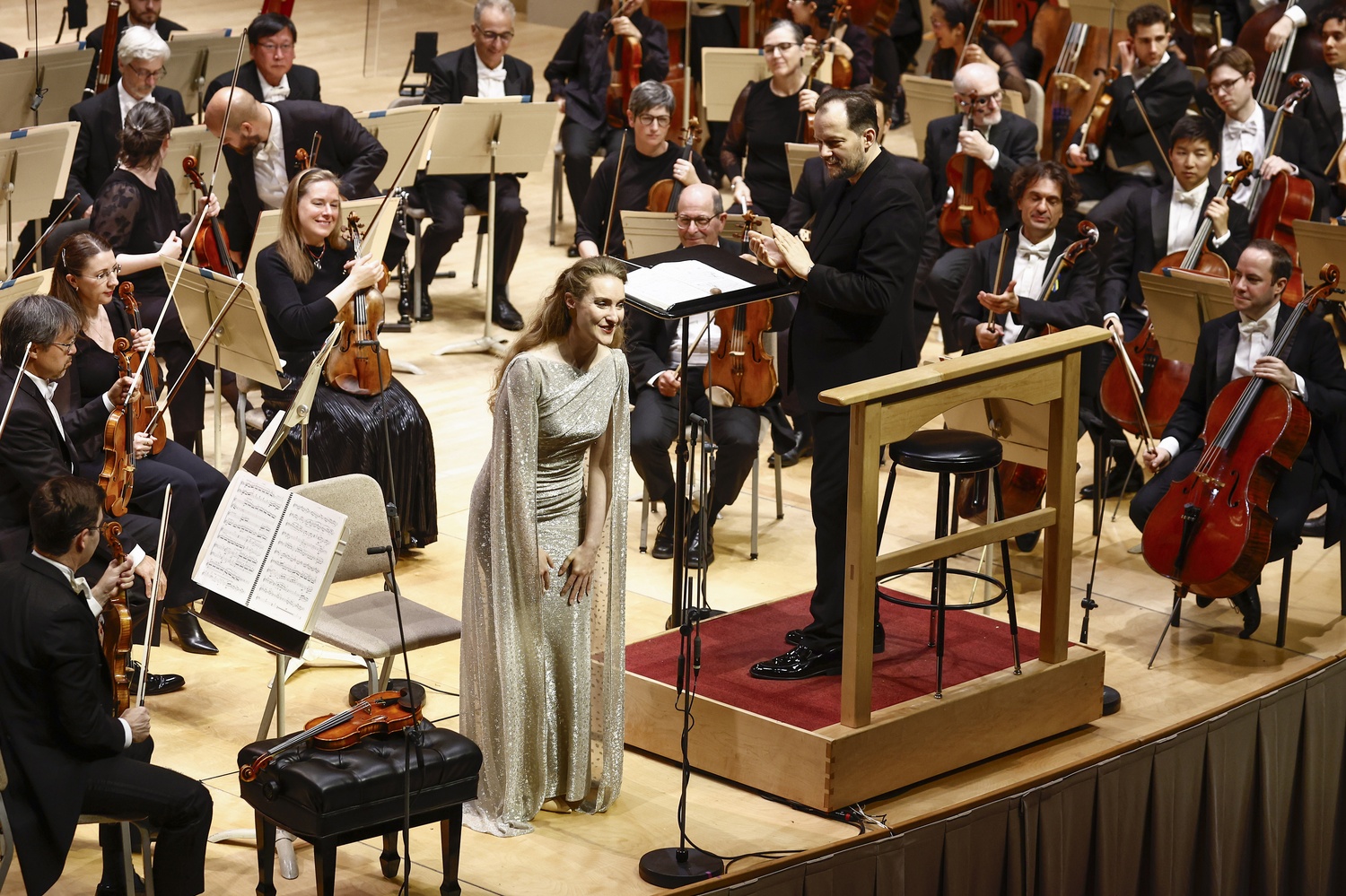
News
Summers Will Not Finish Semester of Teaching as Harvard Investigates Epstein Ties

News
Harvard College Students Report Favoring Divestment from Israel in HUA Survey

News
‘He Should Resign’: Harvard Undergrads Take Hard Line Against Summers Over Epstein Scandal

News
Harvard To Launch New Investigation Into Epstein’s Ties to Summers, Other University Affiliates

News
Harvard Students To Vote on Divestment From Israel in Inaugural HUA Election Survey
Celestial Duality: Debussy and Mahler at the BSO

From Oct. 2 to 4, the Boston Symphony Orchestra performed a hauntingly beautiful program of Debussy’s “Nocturnes” and Gustav Mahler’s “Symphony No. 4 in G major” at Symphony Hall, which invited reflection on the musical expressions of nature and earthly and divine happiness. The performance was led by conductor Andris Nelsons and featured Boston’s all-women vocal group the Lorelei Ensemble as well as German soprano Nikola Hillebrand.
The night began with Claude Debussy’s “Nocturnes,” where the sound of the orchestra floated like a fog suspended over water — hazy, slow moving, and ominously melancholy. “Nocturnes” painted the sounds with colors, stretching the imagination of the audience as it borrowed inspiration from James McNeill Whistler’s impressionist paintings with renders in the gray tones of the music. In “Nuages,” Nelsons shaped the movement as “a study of grey,” letting the harmonies breathe in weightless suspension. The strings shimmered in subtle gradations of tones, while the wind traced the outlines of drifting clouds. Progressing to “Fêtes,” the rhythmic vitality pulsed through the ensemble with a dynamic and procession with unbridled excitement. Yet, an undertone of restraint lingered beneath this celebration, a Debussian tonal virtue.
In the final movement, “Sirènes,” the orchestra and the Lorelei Ensemble’s sopranos and mezzos entered into a fluid dialogue with wordless melody. Their voices rose ethereally, adding layers of unearthly resonance to the orchestra, evoking the haunting voice of the sirens. The collaboration between the orchestra and the ensemble was seamless and balanced.
Mahler’s Symphony No. 4 made up the second half of the program. The flutes imitated sleighbells with wittily flashes in almost childlike gestures, mixing orchestra music with folk-like tendencies. Nelsons brought out the spontaneous quality of the first movement with buoyant flutes, playful strings, and clarinet brimming with naivete. As the symphony progressed, Nelson approached the score’s complex emotional terrain with masterful control. His hands moved with precision, as if sculpting the dynamism of soundscape, with waves of climax followed by retreats into calmness.
Hillebrand entered the finale of the concert and performed“Das himmlische Leben” (“Life in Heaven”), one of the Humoresques from German folk poetry collection “Des Knaben Wunderhorn” that makes up the symphony. She sang with radiant clarity, her tone expressive with an angelic lyricism. Her diction was crystalline with graceful phrasing, and her narrative touch imbued the text with the sincerity of a child recounting paradise. The sleighbells reappeared, punctuating the song with echoes of early joy. Hillbrand’s voice floated above the orchestra in equilibrium with a poised celestial narration. At the final bars, the music faded not into silence but into a kind of suspended stillness. Nelsons with his sensitive meditation between structure and style shaped the closure with reverence like the quiet after a storm.
The pairing of Debussy and Mahler illuminated the BSO’s command of sound and sensitivity under Nelsons’ direction. From the coloristic fog of Debussy’s “Nocturnes” to the serene vision of Mahler’s paradise life, the evening traced a journey between the earth and sky with their celestial meditation and joy.
—Staff writer Dailan Xu can be reached at dailan.xu@thecrimson.com. Follow her on X at @Dailansusie.
Want to keep up with breaking news? Subscribe to our email newsletter.
